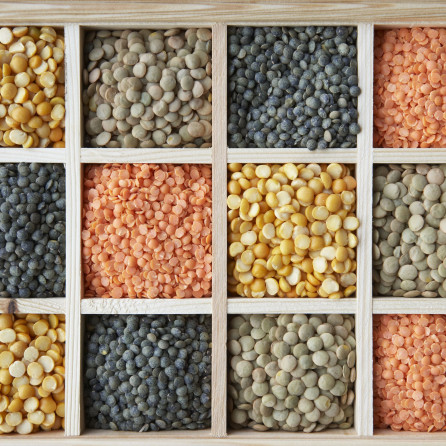
One of the simplest, saturated fat-free, and most affordable ways to eat a protein-rich diet is to make pulses (beans and legumes) front and centre. However, the leticins in pulses mean that some people find them difficult to digest. In many cases, soaking pulses overnight and using a pressure cooker are effective ways to make leticins easier to digest. Including kim chi and sauerkraut in your diet and taking probiotics can also help with digestion.
In my last blog post I talked about weight loss and eating plenty of protein. One of the simplest, saturated fat-free, and most affordable ways to eat a protein-rich diet is to make pulses (beans, legumes) the star. However, some people find pulses hard to digest due to the lectins, or natural chemicals that protect the pulse from rotting.
Different pulses have different levels of lectins; kidney beans have one of the highest lectin counts. Avoiding lectins forms part of the approach of the ‘Best Bet’ diet, so it can seem confusing. If you are concerned you can get a food intolerance test to rule out possible reaction to legumes. If you’re okay with legumes you’ve got a fantastic base for a healthy, fat free, filling and delicious diet!
Don’t trust any canned beans that are still a little bit hard or (I’m going to have to say it) give you wind. For family cooking, the cheapest and best way is to invest in a pressure cooker and the big bags of cheap pulses you can get in Asian or African stores or markets. Soak pulses overnight and change the water many times.
The exception to this is with chickpeas (garbanzo beans, chana), where if you soak them until they are just starting to create bubbles – sometimes one day and night when it’s warm, or two nights when it’s cooler, and then use that same water to cook with and in the sauce, the fermentation really assists digestion, destroying more lectins.
Other beans can also be fermented like this – but I don’t yet know which ones! Then cook in the pressure cooker until very soft. The heat from trapped steam in a pressure cooker is higher than normal boiling so removes more lectins, and cooking times are reduced from over an hour for many pulses to around 15 minutes. Add a capful or half a capful of cider vinegar to the last stage of cooking – with a pressure cooker that means depressuring after 10 minutes, adding it, and carrying on. Your own digestive enzymes are responsible for breaking down about half of the lectins, but some people’s systems struggle to produce enough. Taking a digestive enzyme supplement with your meal can help. If you’re still struggling, try food combining for a while. The basics are: don’t mix starches and proteins; green veg goes with anything, and fruit only on its own.
Find out more here. Your digestion is super important to ensure you’re getting the nutrients from all your foods. Other things that support optimum digestion are probiotics and prebiotics – that Indian diet always uses a live yoghurt.
As on the Overcoming MS Program we aren’t using dairy, substitute with regular helpings of live sauerkraut or kim chi, or take regular probiotics. Your plant based whole food diet should provide plenty of prebiotics – food for the probiotics! If you’ve had serious disruption to your gut, for instance, taking many courses, or long term antibiotics at any point in your life, then you may want to check that you don’t have candida (yeast) overgrowth, and if so choose your probiotics accordingly.
See www.candidasupport.org. Ensuring that you don’t have an individual problem or intolerance to certain foodstuffs, ( food testing again) and Having sufficient stomach acid – relaxing over your food, chewing it well, and if necessary and appropriate, taking supplements of HCL or HCI (both names for hydrochloric acid, which is one of the ‘active ingredients’ in stomach acid that breaks down our food and digestive enzymes.
In one of my favourite cookery books Appetite for reduction by Isa Chandra Moskowitz www.theppk.com, she talks about getting familiar with ‘The Bowl’ – a delicious life saver and friend of the low fat veggie/vegan, that consists of a big bowl, that always features a sauce, a grain, a bean and a green… perfect anywhere and everywhere.
Miranda Olding